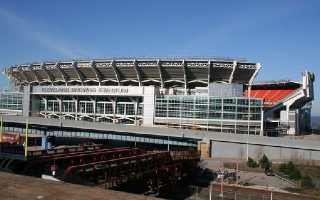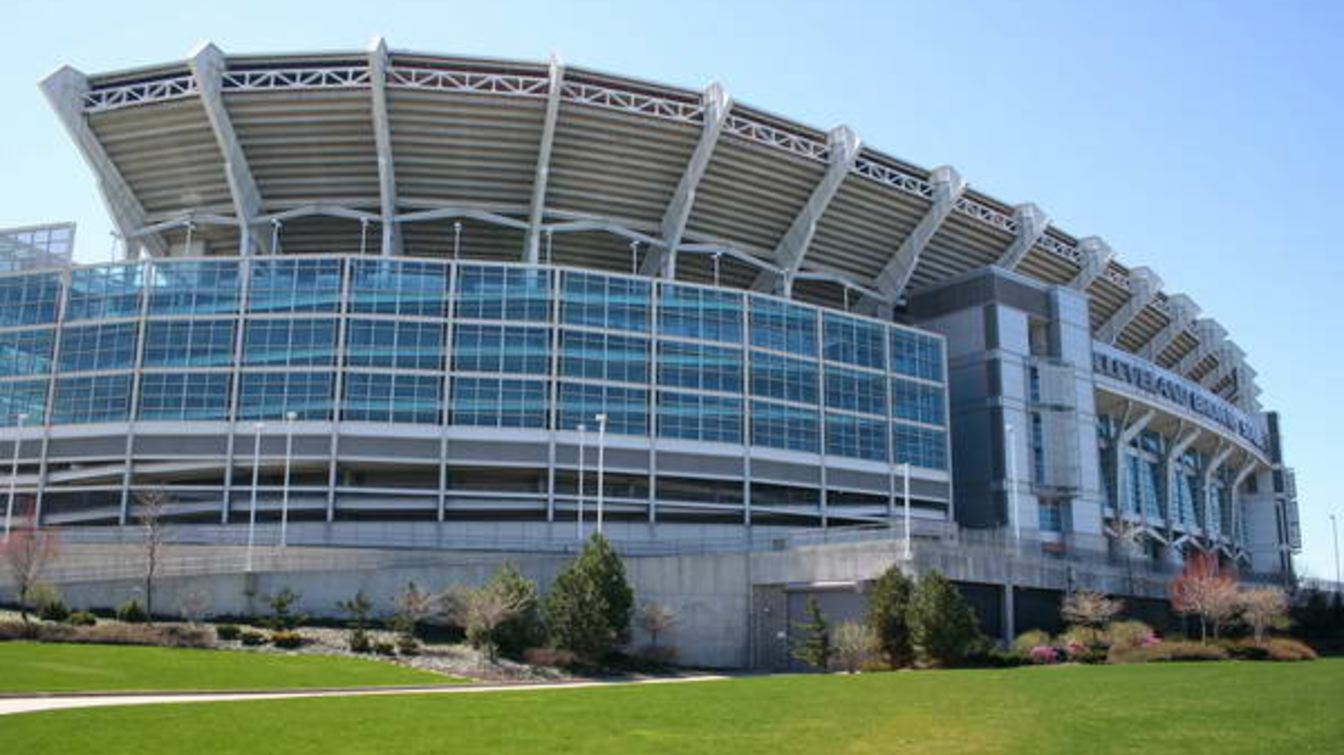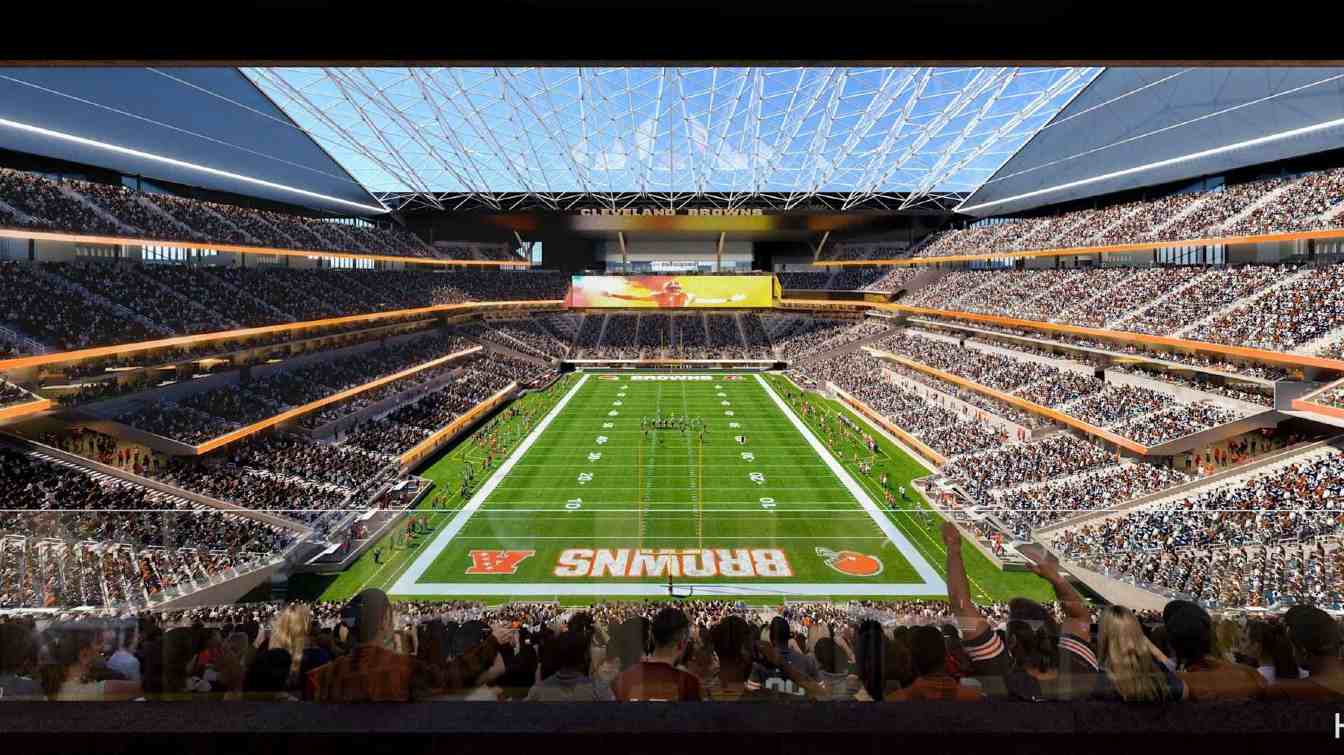USA: Cleveland plans waterfront redevelopment... without the Browns stadium
source: StadiumDB.com; author: Paulina Skóra
 Even though a legal fight aimed at keeping the Cleveland Browns in the city is still going on, Mayor Justin Bibb is still moving on with a new vision for the lakefront—one that does not include the team’s current stadium, Huntington Bank Field.
Even though a legal fight aimed at keeping the Cleveland Browns in the city is still going on, Mayor Justin Bibb is still moving on with a new vision for the lakefront—one that does not include the team’s current stadium, Huntington Bank Field.
Advertisement
Redevelopment proposal without the stadium
Instead of waiting for a conclusion, Bibb has initiated an open call to developers, asking them to envision a future of downtown waterfront without the presence of an NFL stadium.
To this, the city is opening applications for proposals for the use of up to 50 acres of publicly owned lakeshore, some of which constitute the police of the Browns stadium. According to Bibb, by dismantling the stadium, it would be more than a double of the space that can be used for his multibillion-dollar revitalization project. The plan could not only change the downtown Cleveland drastically but also convert the underused lakefront to a vibrant mixed-use neighborhood with public access, green space, housing, and commercial opportunities.
While, on the other hand, Haslam Sports Group, owners of the Browns, are behind a scheme to relocate the team to Brook Park, a suburb of Cleveland, where they plan to build a brand-new, domed stadium. The outlay for the undertaking is forecast to be $2.4 billion, with $600 million of that sum coming from public coffers. This proposal has drawn a lot of heat, with Bibb openly condemning it and potently pursuing legal methods to prevent it from happening, the most explicit being the use of Ohio's Modell Law.
While waiting for important decisions regarding sports infrastructure, fans often turn to other forms of online entertainment — and one of the most popular is online casino gaming. Discover the best and enjoy the game.
This legislation, which was passed following the relocation of the Browns in the 1990s, is designed to stop the teams of the professional sports from going out of Ohio without the local governments being given the opportunity to buy or prevent the move. The plan is to create 50 acres of lakefront area without the Cleveland Browns,
Bibb said at a press conference. I want to be clear just to leave no doubts.
To Bibb, football is merely a trigger for him to recapture a part of the city that was once off-limits and to visualize it as a place for the generations to come.
What would be the price of tearing down the stadium?
In case the Browns relocate, it is highly probable that the Huntington Bank Field would be razed, thus, the place will be available for redevelopment. Mayor Bibb has been unambiguous that he expects the Browns’ ownership group to be the ones who will pay for the demolition of the stadium. Although no official cost estimate has been published by the city, sources of information from different periods point to the fact that it would be a large amount of money.
To be more specific, in 1996, the old Cleveland Municipal Stadium was torn down to make space for the current stadium. The city gave a contract worth $2.9 million for the demolition to Demco Inc., and the work commenced in the fall of that year. When adjusted to the present day, the figure is more than $6 million, according to the U.S. Bureau of Labor Statistics (BLS).
But definitely, inflation is only a part of experts' rhetoric. Albert Robinson, a spokesperson from Cleveland Demolition, argues, Prices were stable before the pandemic. Now everything has risen in price. Material and labor costs have increased by at least 20%, and the market is still unpredictable.
This unpredictability factor might result in a final cost that is way higher than the initial estimates, even into the new money figure in the range of tens of millions.
The timeline of the Cleveland stadium
Huntington Bank Field is a current sports venue situated adjacent to Lake Erie in downtown Cleveland. It is just next to major landmarks such as the Rock and Roll Hall of Fame and the Great Lakes Science Center. The stadium was constructed at the same place where the old Cleveland Municipal Stadium used to stand, and the building process officially started in 1997 and was completed during the opening ceremony of 1999.
The arena has a seat carrying capacity of nearly 67,000 and was made by the architectural firm HOK Sport (now Populous), famous for their specialization in sports architecture. The whole amount was about $290 million, of which the public sources gave the major part. After it was inaugurated, the stadium has been the residence of the Cleveland Browns and has also accommodated various other events, such as concerts, college football games, Monster Jam, and even international soccer matches.
The stadium’s feature that is most iconic is probably the Dawg Pound,
a part of the east end zone which is able to contain 10,000 or more of the team’s most ardent fans. In the period 2014-2015, the stadium was refurbished at a cost of $125 million. In that renovation, the features of the lower bowl seating were improved, high-definition video boards were introduced, the audio system was made better, VIP areas were renovated, and also the digital infrastructure was upgraded, for example, public Wi-Fi.
However, the stadium still has no facilities that are normally there in other NFL stadiums, such as a roof that can be retracted or the possibility to use it all the year, which the critics have been mentioning notwithstanding these improvements. The Haslam family has pointed out those issues as the main reason they want a new stadium to be built at a different place.
What’s next?
The Browns' current deal for Huntington Bank Field finishes after the 2028 NFL season. Even though the city is eager to keep the team downtown, the Browns' ownership seems more and more focused on relocating to Brook Park, a move that is further supported by access to $600 million in public funding from unclaimed funds in the state of Ohio.
The legal battle is getting intense. Cleveland has taken it to court to ensure the Modell Law is followed. They argue that the team can only move with the approval of the city. On the other hand, Haslam Sports Group has gone to court, too, but claims that the law conflicts with the constitution and hence cannot they be obliged. The judge in a Cuyahoga County court has recently intervened by rejecting the Haslams’ request to stop the case, so the matter still goes on. A decision at this stage could set a precedent not just for Cleveland but the whole country in issues of sports franchise relocation.
In what ways have other municipalities converted their outdated sports arenas into new facilities?
As Cleveland considers losing its NFL franchise, the city could take some cues from other places that have found inventive ways to repurpose their old stadiums. The transformation story is common in the U.S. because of the many reconditioned sports venues. Some of these venues have become retail centers, places of worship, or mixed-use developments. One example is in Memphis, where a basketball arena has already been turned into a Bass Pro Shop, the biggest one in the world. It is even more than a store because of the indoor swamp, hotel, bowling alley, and observation deck that come with it. Another example: In Houston, Summit Arena, the former home of the NBA’s Rockets, was converted by the televangelist Joel Osteen into Lakewood Church, a giant worship space that now seats 16,000 people. Meanwhile, the Cooper Stadium in Columbus, Ohio exemplifies what can be done with the space when a ballclub moves--it is now a haven for development projects including residential buildings and retail stores.
Advertisement

 StadiumDB
StadiumDB ©
©  ©
©